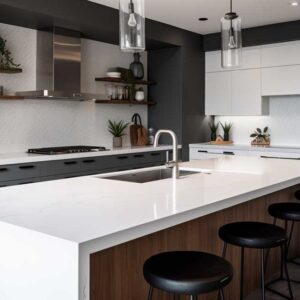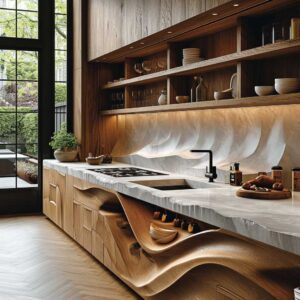The modern transitional style kitchen is a blend of contemporary and traditional elements, resulting in a timeless and elegant design. This style is characterized by a neutral color palette, clean lines, and a mix of natural and man-made materials. It is perfect for those who appreciate the classic charm of traditional design but also want a touch of modernity. In this article, we will guide you through the essential elements to create a cohesive modern transitional style kitchen.
Elegant Blend of Classic and Contemporary
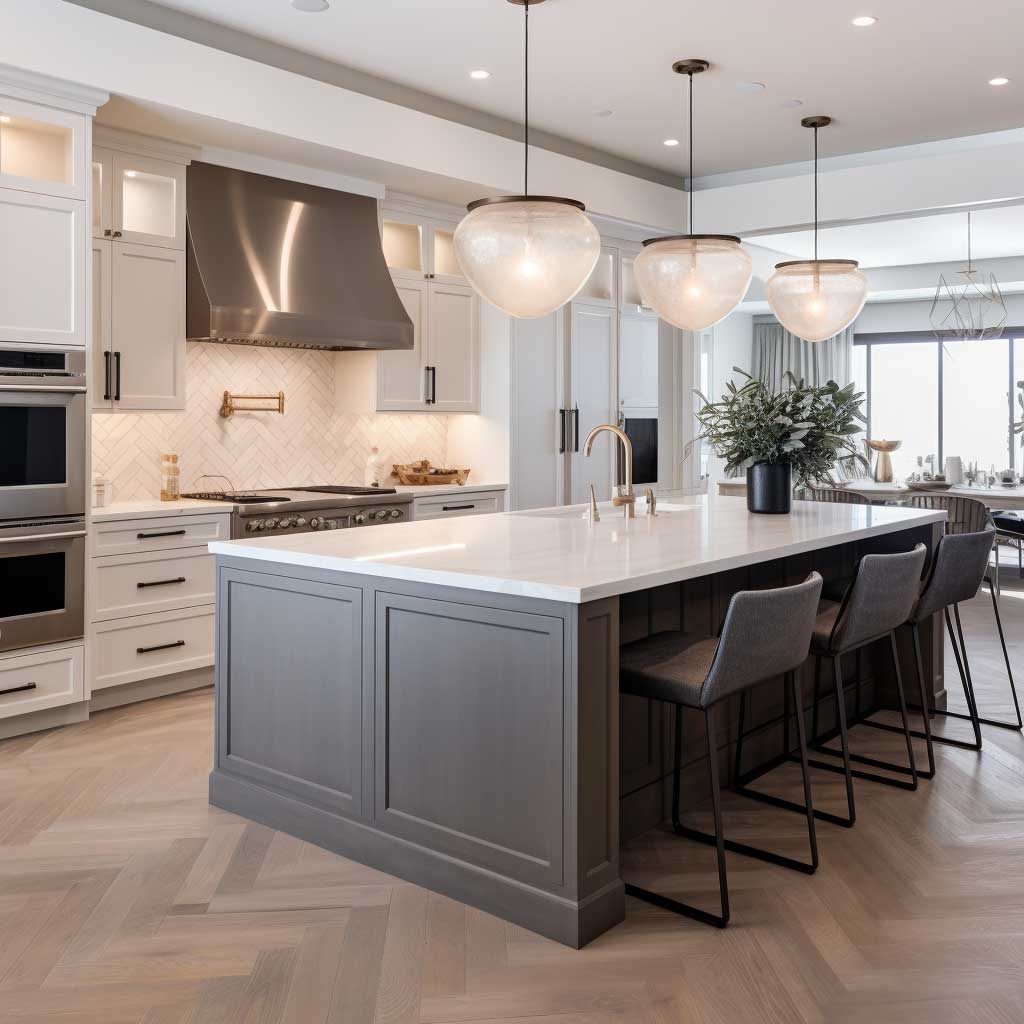

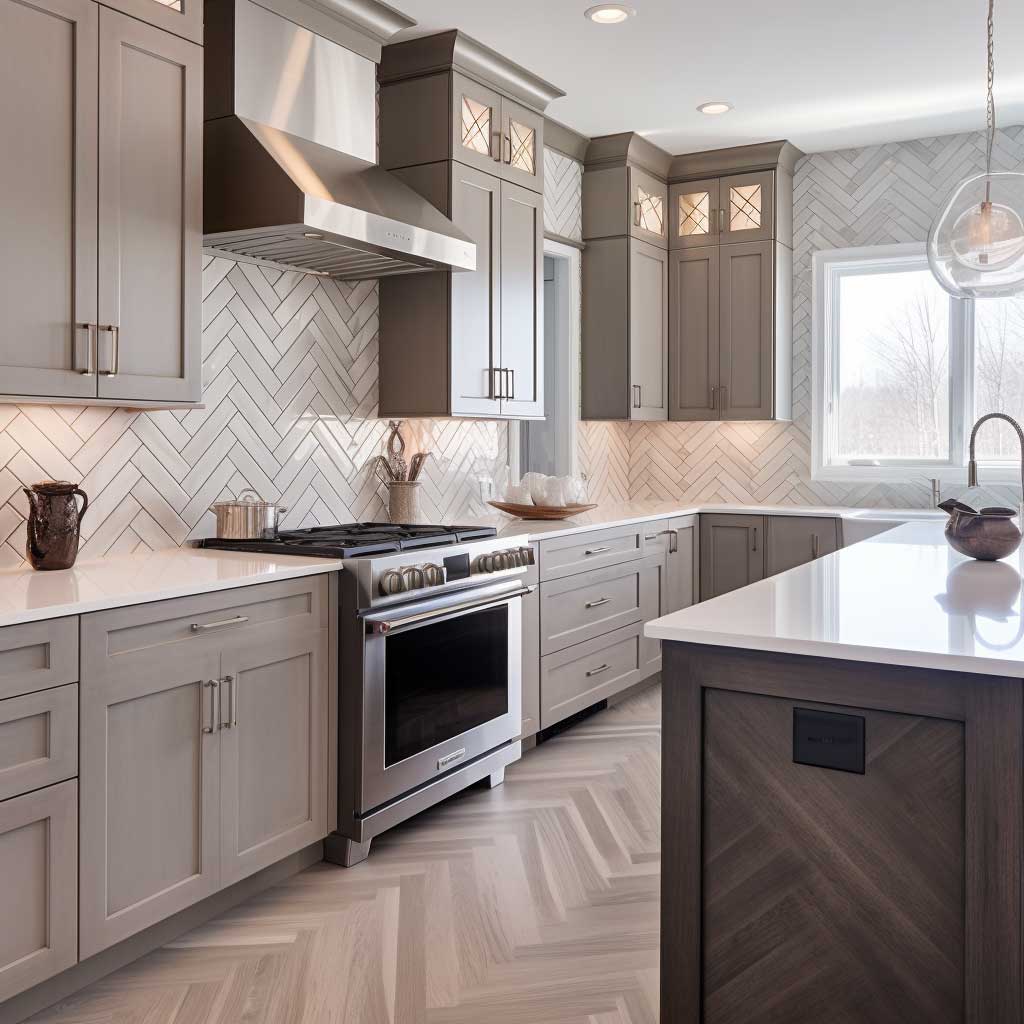
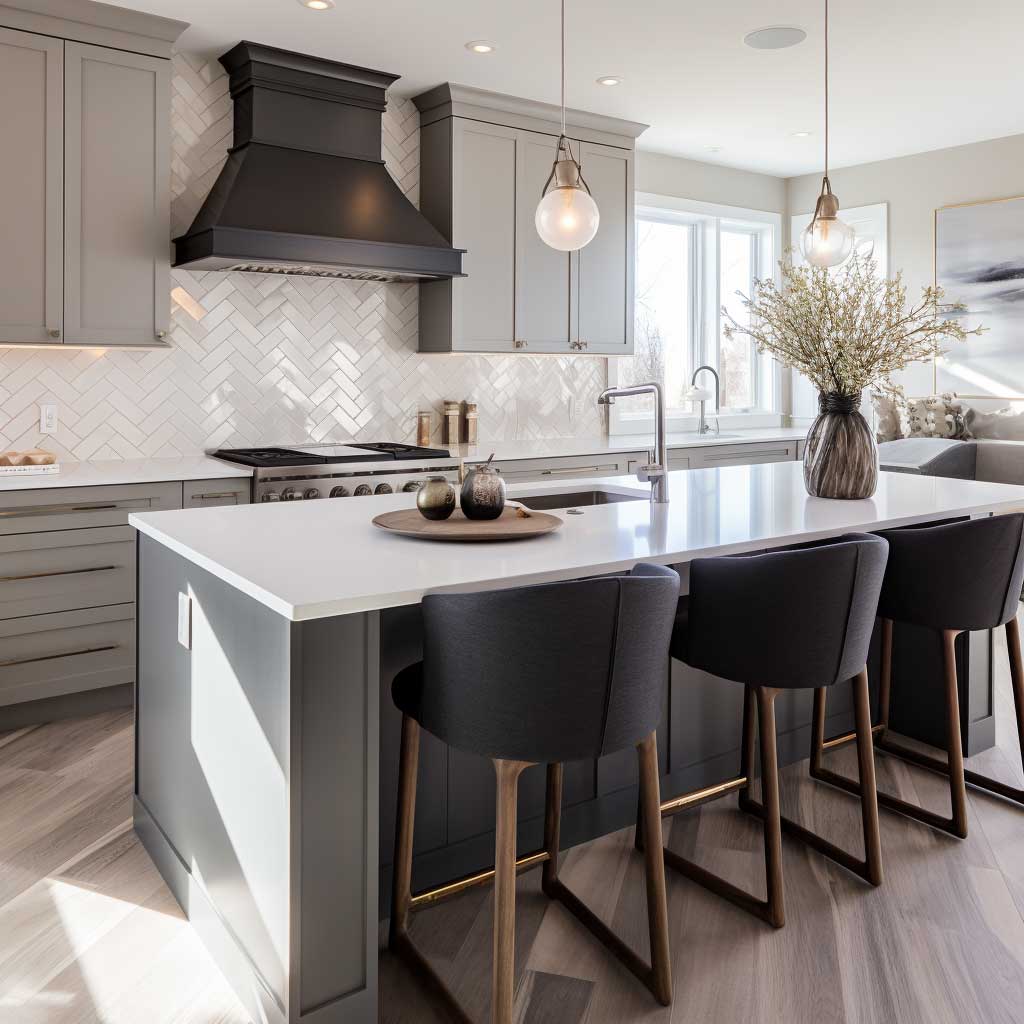
The modern transitional style kitchen is a beautiful amalgamation of classic and contemporary elements, crafting a functional and beautiful space. It has a clean palette, clean lines, and a mix of natural and man-made materials. Now, let’s explore in detail some of the salient features that help in creating a modern, transitional-style kitchen with an elegant balance of classic and contemporary.
A neutral color palette is one of the key elements to a modern, transitional-style kitchen. This color palette includes white, beige, and gray, usually combined to bring an atmosphere of calm and soothing ambience. These colors give the perfect backdrop to let other important design elements contrast and stand out as focal points in space. For example, one could have a white subway tile backsplash contrasted by dark gray cabinets and stainless steel appliances. The presence of natural materials like wood and stone can be included in the space to create an element of warmth and texture. Example, a wooden island countertop paired with white cabinets and a gray tile floor to balance and harmonize the look.
Another major element that can define a modern, transitional-style kitchen is clean lines. Clean is a design style that lays most emphasis on simplicity and minimalism, which can be represented in the choice of cabinetry and hardware to have clean, straight lines. For example, a shaker-style cabinet with a flat panel door and simple hardware can create a clean and streamlined look. Moreover, opting for straight edge profile countertops and a simple choice of backsplash design could actually give an even cleaner, more minimalist aesthetic.
A balance is created between natural and man-made materials in a modern transitional style kitchen. Materials like wood and stone, which are natural, are quite common to be used for countertops, cabinets, and flooring. Such materials bring warmth, texture, and character into a space. Quite probably, the most common use of man-made materials would be through appliances and fixtures, which are made of stainless steel and glass, and add a sleek and modern appeal into the space. The real key for this look is to keep a balance between the two types of material to make sure one doesn’t overpower the other. A classic example is wooden cabinets in contrast to a quartz countertop and stainless steel appliances, which will create a look that is properly balanced and coordinated.
Creating an integrated modern transitional style kitchen is paramount to establishing a proper balance between traditional and contemporary elements. This can be done by making very selective choices of design elements that reference both styles, and then incorporating them into the space in a very harmonious manner. That is to say, a farmhouse sink and shaker-style cabinets can coexist with stainless steel appliances and a modern light fixture. Moreover, using transitional elements, such as a subway tile backsplash and a neutral color scheme, could bridge that gap to make a holistic appeal.
In conclusion, the creation of a tasteful confluence of classic and contemporary within the modes of a modern-transitional-style kitchen would implore careful color, material, and design element selections which represent both. This is carried out through a neutral color palette, lines that are crisp, the mixture of both natural and man-made materials to bring out a timeless sense of elegance for your kitchen, and have everybody swooning for more. Keep in mind the balance of different design elements and materials to keep the look harmonious. A well-designed modern-transitional-style kitchen can ultimately make a space loved and enjoyed by all for years to come.
Timeless Appeal of Neutral Tones
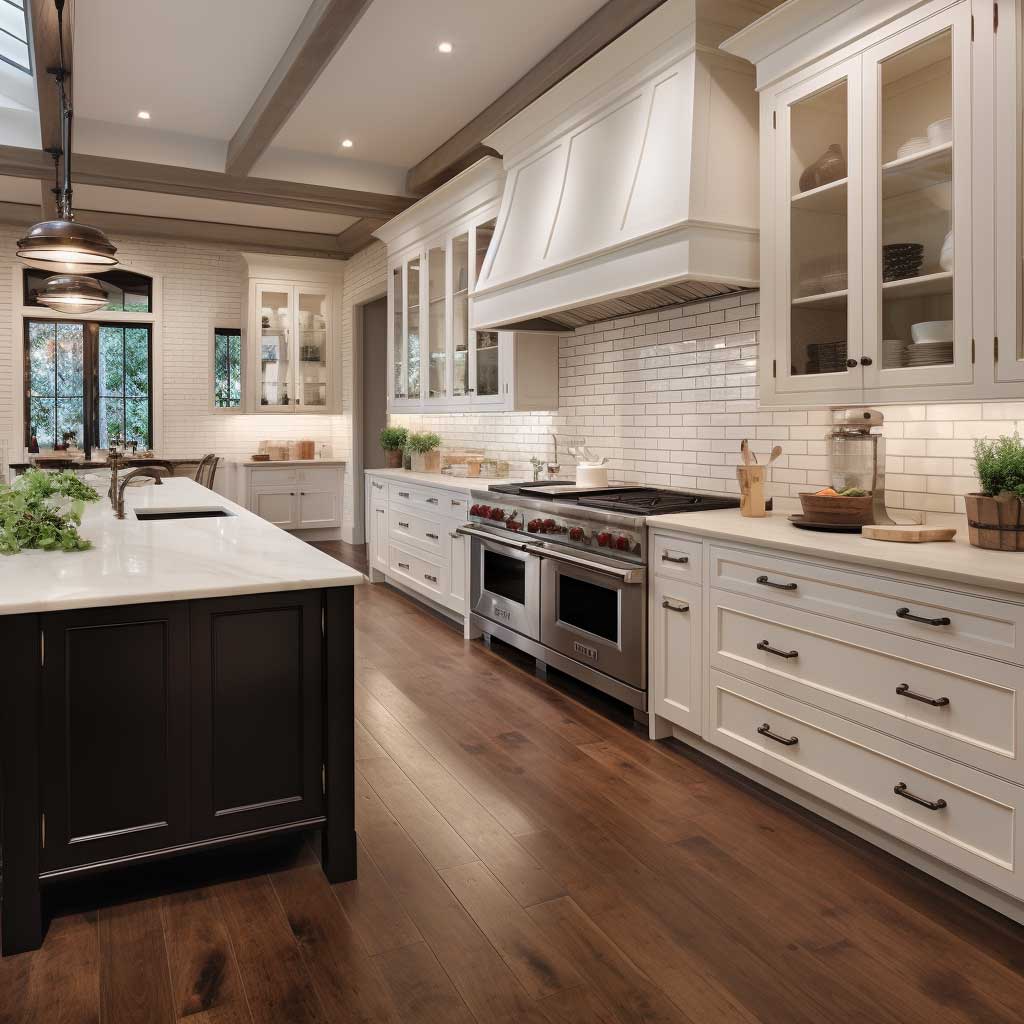
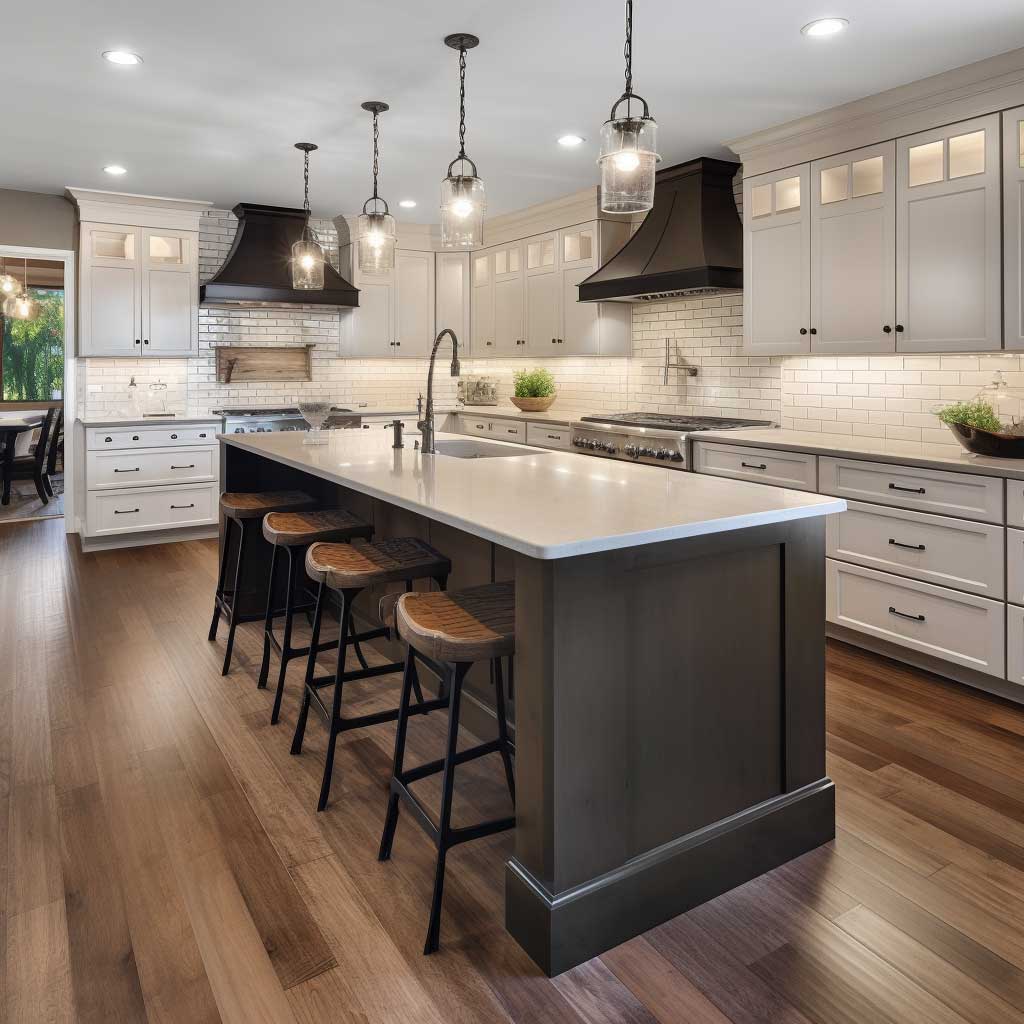
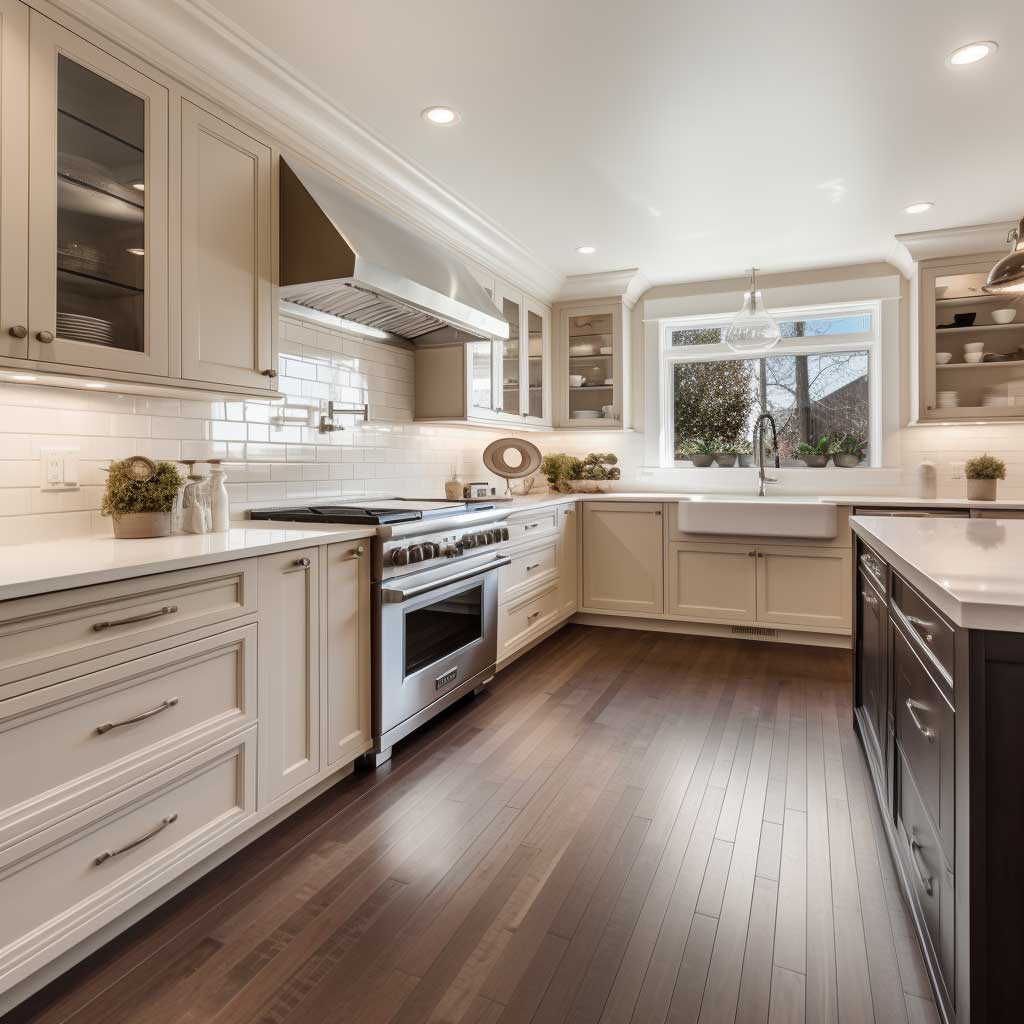
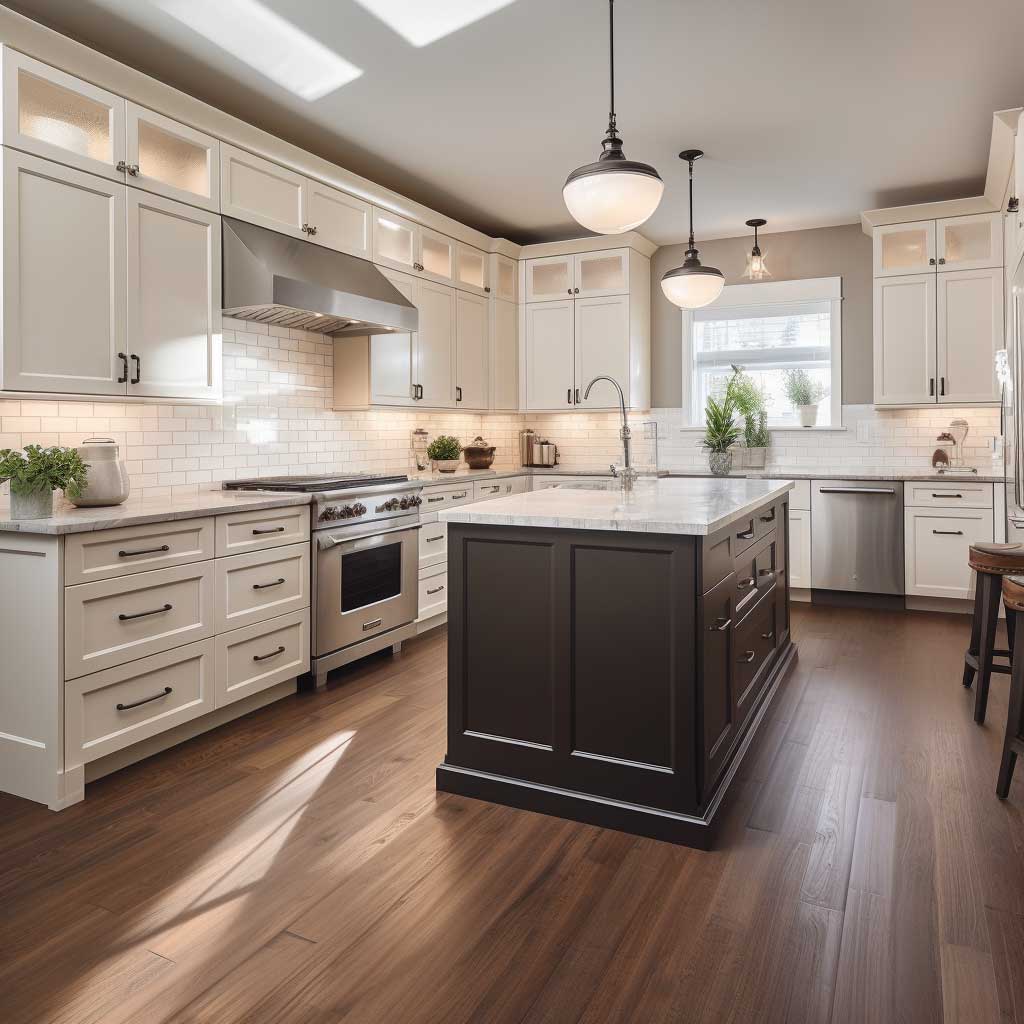
Neutral shades are the most common tones used when defining the modern transitional style kitchen. This is usually in shades of white, beige, and gray, which help to soothe and calm the atmosphere. The colors also go on to be the perfect backdrop for other designing elements, make them stand out, and become focal elements in the space. In this essay, we are going to find out about the timeless appeal that neutral shades bring to the modern transitional style kitchen and how they go on to make a harmonious and cohesive space.
Neutral tones create a quiet ambiance within the modern transitional style kitchen. In mostly white, beige, and gray, the palette is used to create a sense of calmness and serenity in the space. This also helps in opening up the space, hence making it look larger for small kitchens. In this view, a neutral color palette could perform the role of a perfect backdrop for other designing elements; it allows other colors, textures, and materials to stand out and become focal elements in a space.
A modern transitional style kitchen often sees a neutral color palette complementing other design elements—letting colors, textures, and materials emerge as focal elements in the space. For instance, a white subway tile backsplash can be paired with dark gray cabinets and stainless steel appliances to create a striking contrast. Second, the kitchen design is warmed with natural materials like wood or stone. For instance, a wooden island countertop with white cabinets and a gray tile floor will feel balanced and harmonious.
A neutral color palette provides flexibility and versatility in a modern transitional style kitchen. One can easily update and change the decor and design elements of a space without fully redoing the same. For instance, changing wall colors or adding colorful accessories helps update and change the outlook of the kitchen without making major changes. Also, a neutral color palette easily blends with different design styles, which makes it timeless and versatile.
Neutral tones have a timeless appeal that never fades away. They are classic and sophisticated, befitting a perfect match for a modern-transitional style kitchen. A neutral palette is also very easily updated and refreshed with new accessories and decor, therefore, very versatile and cost-effective. In all, the timeless appeal of neutral tones in the modern-transitional style kitchen offers an opportunity for the creation of a harmonious and coherent space; it provides a quiet and peaceful setting, boosting harmony between other design elements in a timeless versatile look.
Harmony of Natural and Man-made Materials
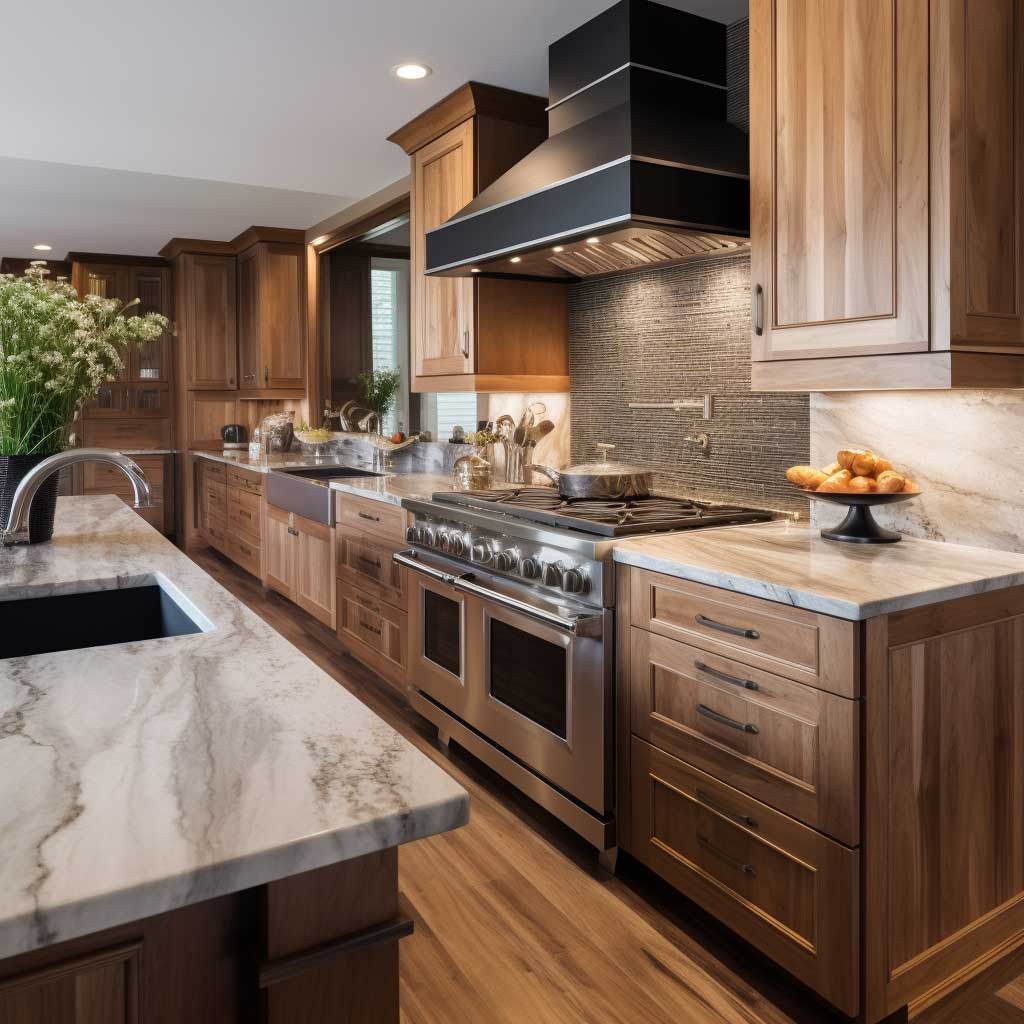
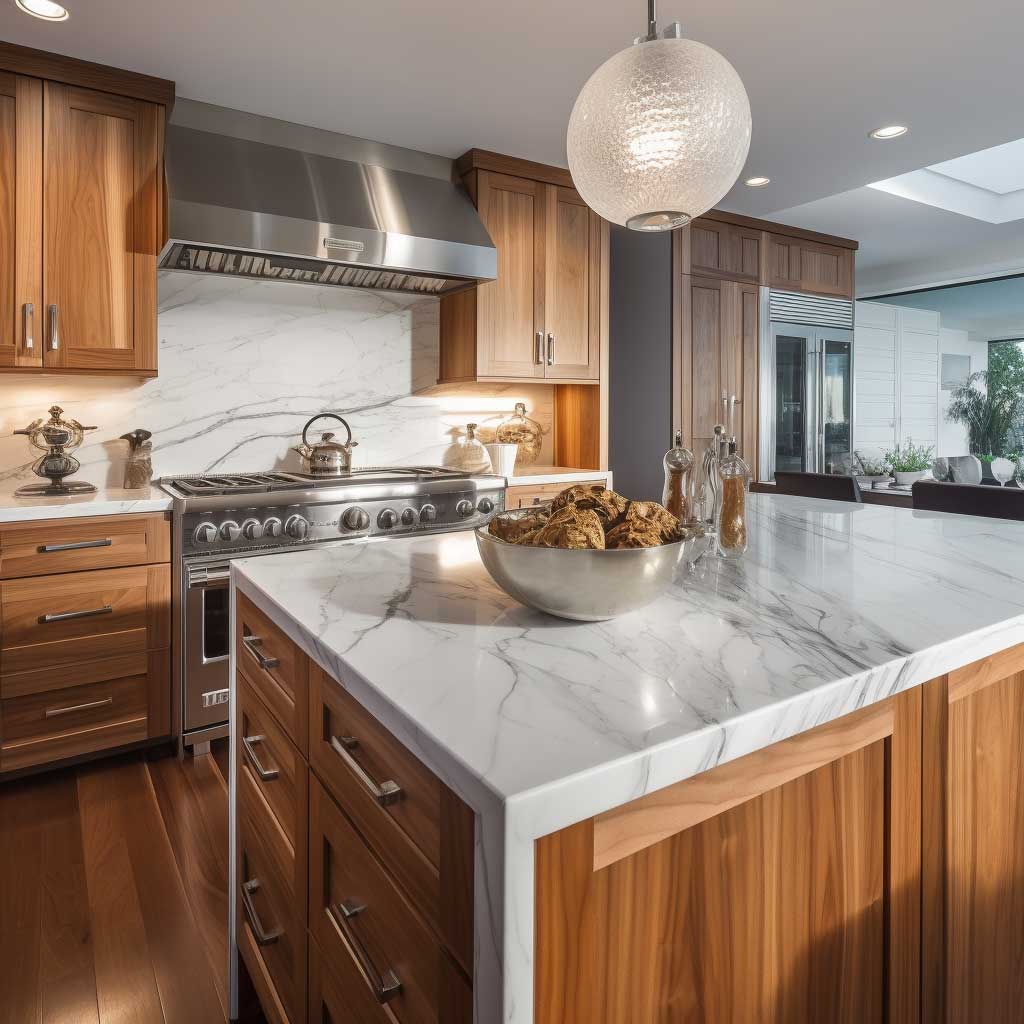
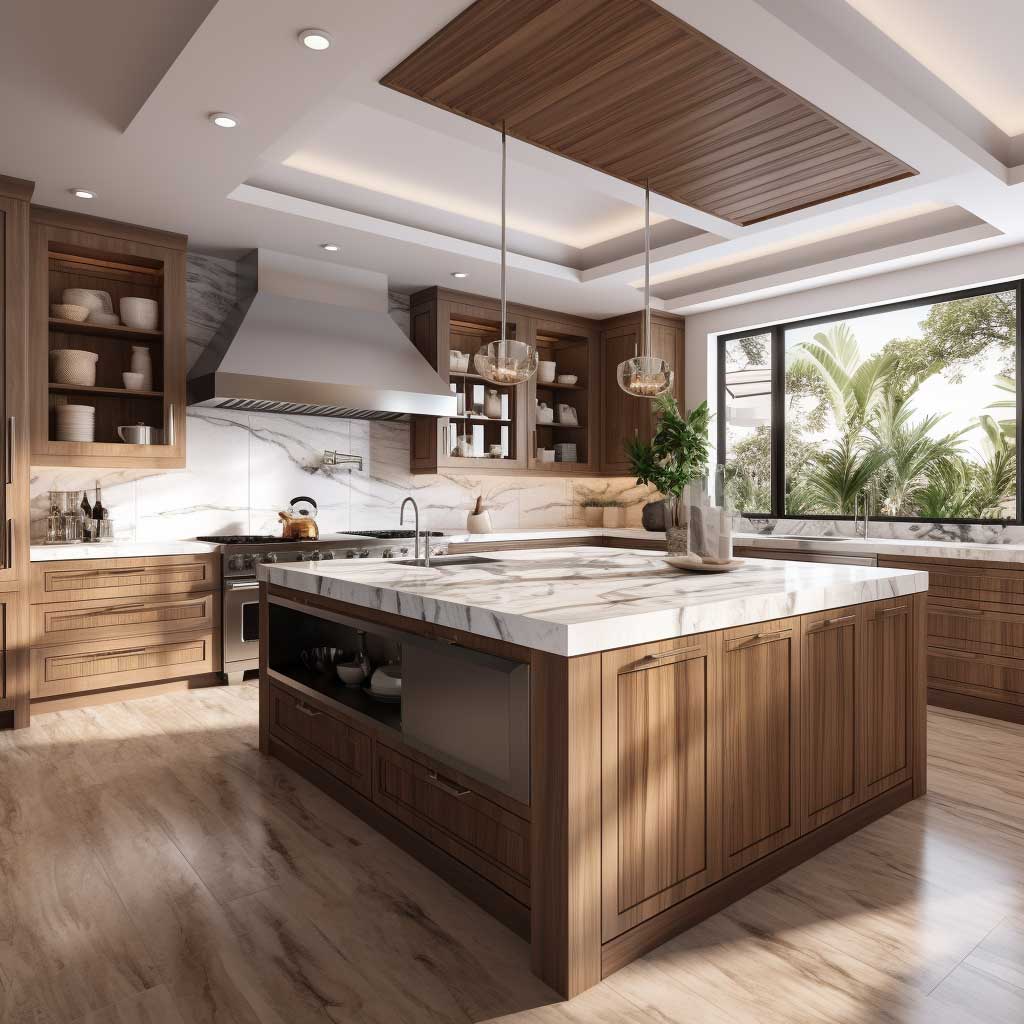

Kitchens in modern transitional styles see the harmonious blend of natural and man-made materials. The most common use of natural elements seen in these is the presence of wood and stone in countertops, cabinets, and flooring. They provide warmth, texture, and character to the space. On the other hand, man-made materials come in the form of stainless steel and glass, which is most commonly used on appliances and fixtures, giving that modern feel and clean look to the space. This paper investigates the balance of natural and man-made material in modern transitional style within a kitchen to provide a cohesive and harmonic space.
The natural materials, including wood and stone, are used to add warmth, texture, and character to a kitchen in a modern transitional style. For example, wood, which is, in most cases, used to make the cabinets and floor of the kitchen, brings with it an aspect of warmth, hence making it feel more inviting and cozy. In most cases, the texture and character of such natural materials add depth and interest to the space, thus making it very dynamic and appealing to the eye.
Man-made materials, such as stainless steel and glass, bring in a modern sleek look to the modern transitional style of the kitchen. Stainless steel is normally used for appliances, fixtures, and hardware, while glass is common in backsplashes and cabinet doors. Such materials add to the space a sleek and modern feel, making it more contemporary and trendy. The reflective surfaces of stainless steel and glass further make the space feel larger and more open.
A balance between the natural and man-made materials is key for a coherent modern-transitional-style kitchen. Contrast adds balance to your design. Do this by using different materials but in a balanced manner. For example, this balance could be in evidence with wooden cabinets, a quartz countertop, and stainless steel appliances. Transitional elements, like the subway tile backsplash, and a soft color palette, take it a step further to bridge the gap between both types of materials. In a word, the balance of natural and man-made materials in a modern-transitional kitchen space will guarantee charm for the space. A mix of natural and man-made materials into the space for warmth, texture, and character is brought in for a sleek, modern touch. Make sure that the balance of the materials is proper and harmonizes perfectly to maintain a unified look. Overall, a beautiful transitional-styled modern kitchen, with a nice harmony of material—both natural and man-made—that everybody will adore in the years to come.

